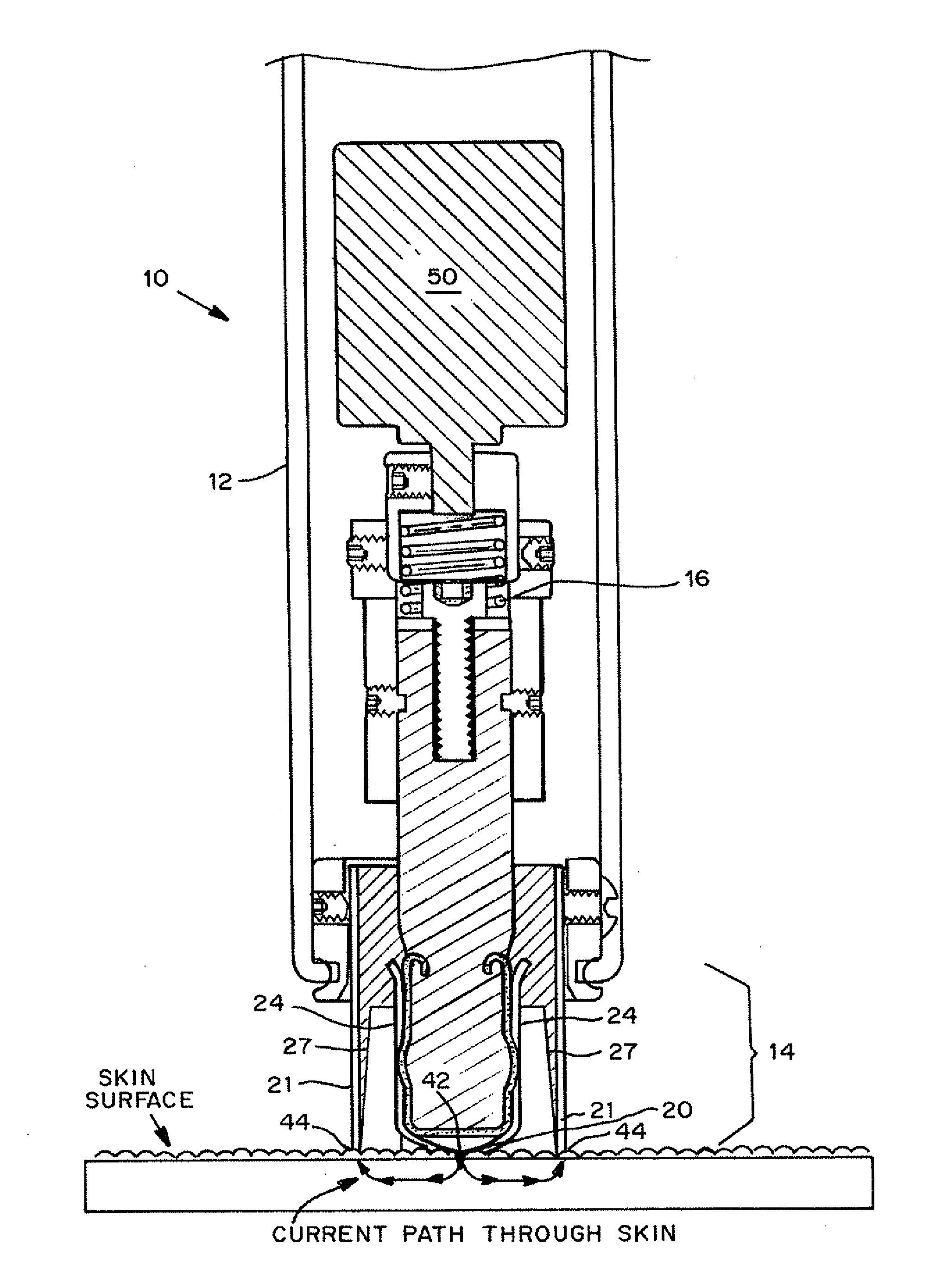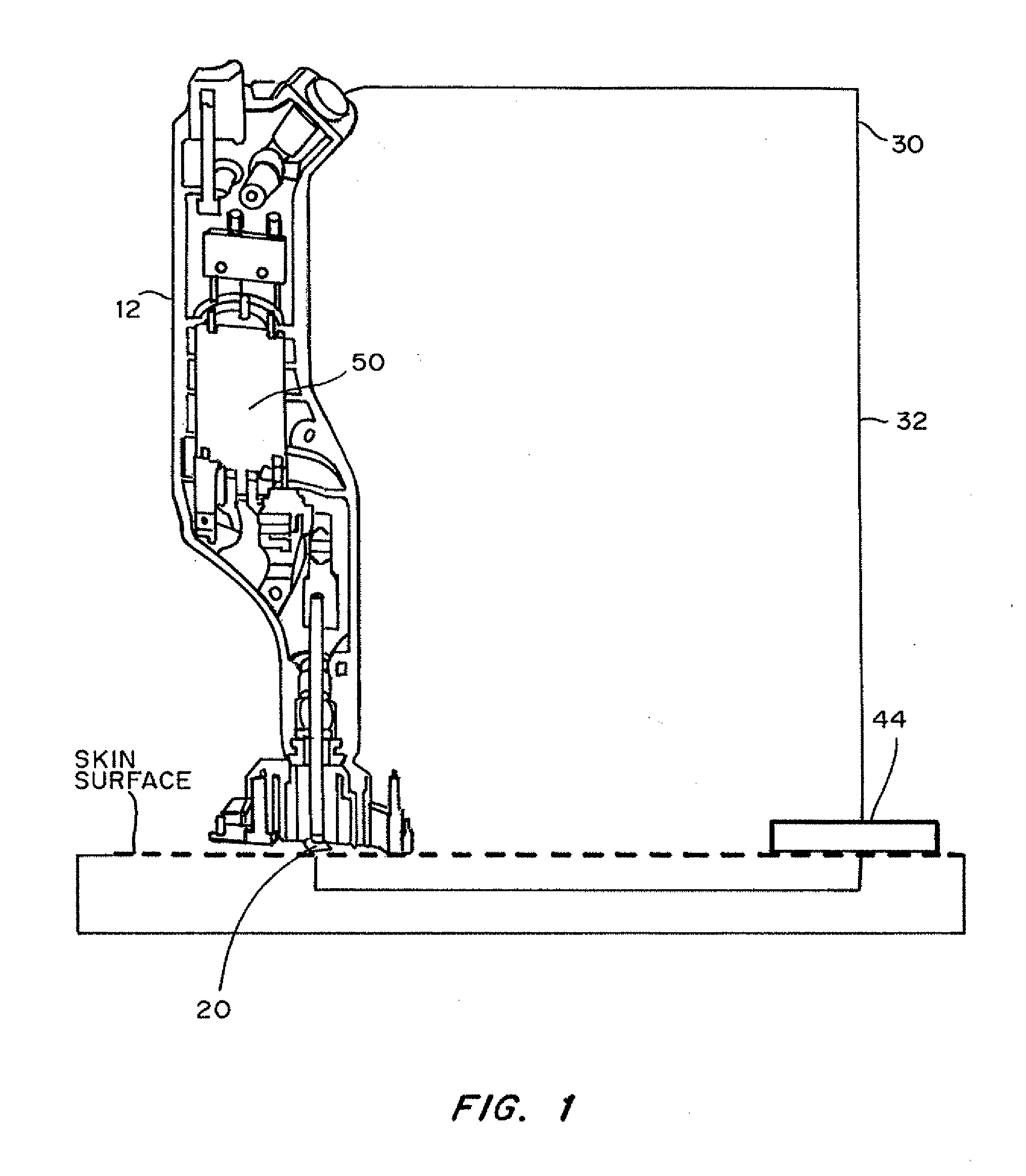Skin Permeation Device for Analyte Sensing or Transdermal Drug Delivery
a technology of skin permeation and analyte, which is applied in the direction of diagnostic recording/measuring, application, therapy, etc., can solve the problems of limiting the rate of this process, affecting the permeability of the skin, and presenting a very significant problem in the barrier function of the skin, so as to increase the skin's permeability
- Summary
- Abstract
- Description
- Claims
- Application Information
AI Technical Summary
Benefits of technology
Problems solved by technology
Method used
Image
Examples
example 1
Comparison of Two Skin Permeation Methods: Sonophoresis and Abrasion
[0103]In a 6-subject, 24-hour study the performance of the abrasion method was compared to a sonophoresis method described in U.S. Pat. No. 6,887,239 to Elstrom et al. using the same control algorithm as indicated in FIG. 4. Each subject had one abraded site and one sonicated site on chest or abdomen sites.
[0104]For the controlled abrasion system, the abrasion device described in FIG. 1 was applied to the patients' skin for 5 to 25 seconds, until the conductivity feedback threshold was attained (as described previously in section I.b. Feedback Control Mechanism).
[0105]For the controlled sonophoresis system, ultrasound at a frequency of 55 kHz was applied to the patients' skin for 5 to 30 seconds using the Sontra SonoPrep® ultrasonic skin permeation device. The ultrasound was applied until the conductivity feedback threshold was attained (as described previously in section Lb. Feedback Control Mechanism).
[0106]Glucos...
example 2
Lowering Impedance of Skin Following Application of Abrasion Device
[0111]When human skin is wetted by pure water, the impedance value is usually 300 k-ohms or above, when measured by placing two electrodes within a distance of approximately 1 cm on the wetted skin. However, when the same area was treated by with a controlled abrasion device using a control algorithm as shown in FIG. 1, by placing the device on the skin surface for 5 to 25 seconds and obtaining the impedance value simultaneously with the application of the device, the impedance value was significantly reduce to about 10 k-ohms or lower. In this study, the abrasive tip contained white aluminum oxide (120 grit) coated onto an ABS base.
PUM
 Login to View More
Login to View More Abstract
Description
Claims
Application Information
 Login to View More
Login to View More - R&D
- Intellectual Property
- Life Sciences
- Materials
- Tech Scout
- Unparalleled Data Quality
- Higher Quality Content
- 60% Fewer Hallucinations
Browse by: Latest US Patents, China's latest patents, Technical Efficacy Thesaurus, Application Domain, Technology Topic, Popular Technical Reports.
© 2025 PatSnap. All rights reserved.Legal|Privacy policy|Modern Slavery Act Transparency Statement|Sitemap|About US| Contact US: help@patsnap.com



